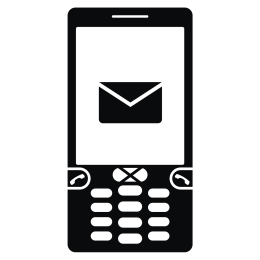The Second EDSA Revolution (EDSA II) was a four-day political protest from 17–20 January 2001 that peacefully overthrew the government of Joseph Estrada, the thirteenth President of the Philippines. Estrada was succeeded by his Vice-President, Gloria Macapagal-Arroyo, who was sworn into office by then-Chief Justice Hilario Davide, Jr. at around noon on 20 January 2001, several hours before Estrada fled Malacañang Palace. EDSA is an acronym derived from Epifanio de los Santos Avenue, the major thoroughfare connecting five cities in Metro Manila, namely Pasay, Makati, Mandaluyong, Quezon City, and Caloocan, with the revolution’s epicentre at the EDSA Shrine church at the northern tip of Ortigas Center, a business district.
Now, what was the ICT’s role during the EDSA Dos?
ICT – specifically, the mobile phone – was the symbol of the EDSA Dos in the Philippines. Arguably, the most lasting image of Ms. Gloria Macapagal-Arroyo’s new Presidency was when, on being asked in a news conference whether a Lt. Gen. Espinosa was planning a coup, she called him up on her mobile phone. In moment of high drama she asked him directly if this was the case and after a brief conversation reported it wasn’t.
But it was the use of cellphones for “texting” rather than calls that was the most intriguing part of EDSA Dos and was also the key to its success. The lack of attention to the role of technology is surprising. EDSA Dos was arguably the world’s first “E-revolution” – a change of government brought about by new forms of ICTs.
“Texting” allowed information on former President Estrada’s corruption to be shared widely. It helped facilitate the protests at the EDSA shrine at a speed that was startling – it took only 88 hours after the collapse of impeachment to remove Estrada. The use of mobile phones was why the mobilization (or perhaps “mobile-ization”) was so large and so rapid and thus so decisive. Estrada himself blamed his ouster on the “text messaging generation.”
Mobile phone technology was not just critical in the days preceding People Power II; it had been important over a number of months. In Spring last year, Estrada ordered key government agencies to do something about alleged text-messages abusing him. The same week, texters started passing around messages using an exclamation mark as a symbol to call for an end to the Estrada government’s corruption, cronyism and incompetence.
ICT played a huge role during the EDSA Dos. Without it, we wouldn’t have removed someone in a high position who uses his power for corrupted ways.
References:

